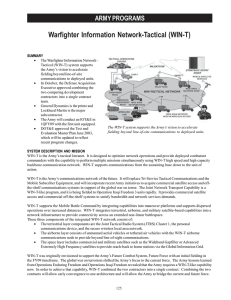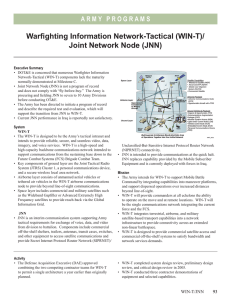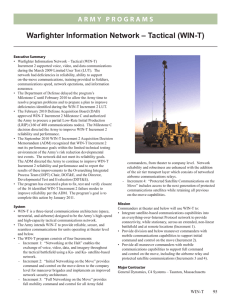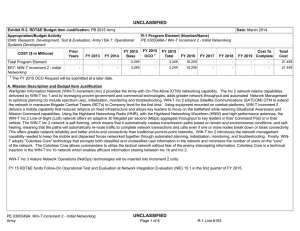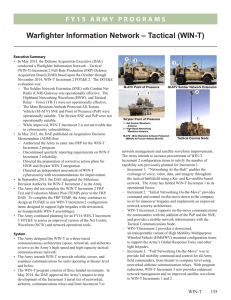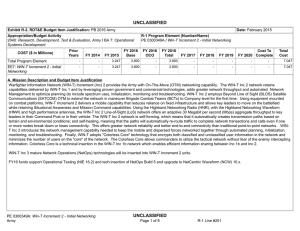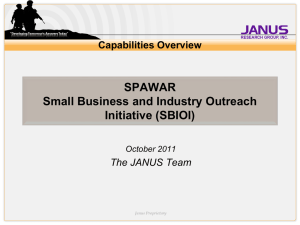Warfighting Information Network-Tactical (WIN-T)
advertisement
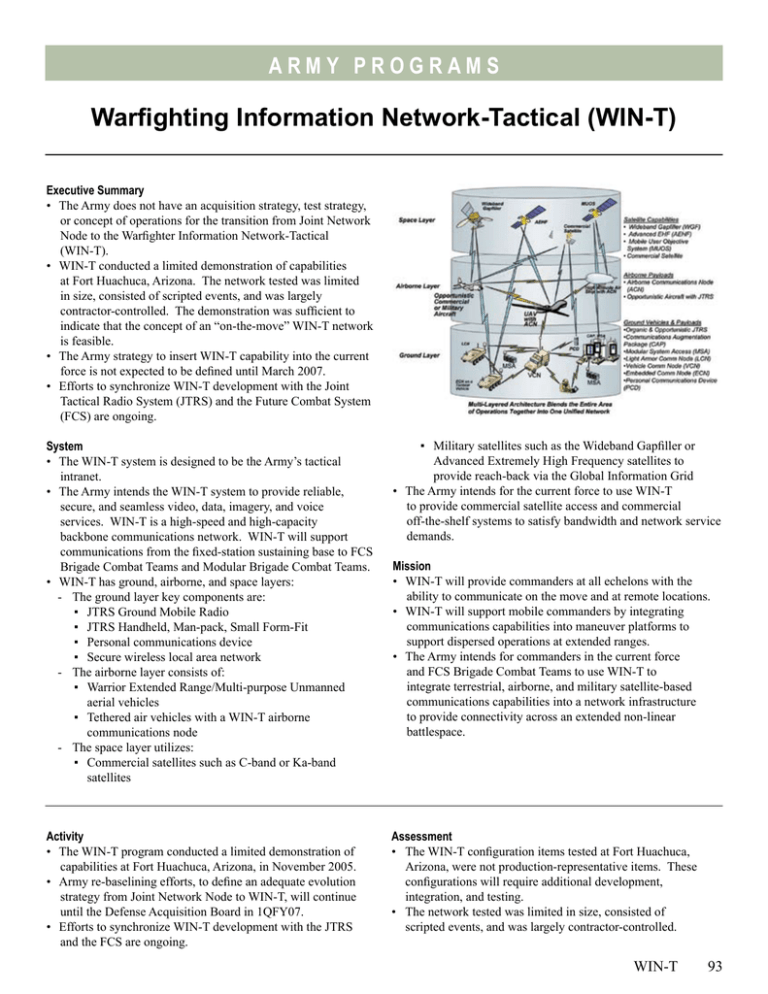
A r my P RO G R A M S Warfighting Information Network-Tactical (WIN-T) Executive Summary • The Army does not have an acquisition strategy, test strategy, or concept of operations for the transition from Joint Network Node to the Warfighter Information Network-Tactical (WIN-T). • WIN-T conducted a limited demonstration of capabilities at Fort Huachuca, Arizona. The network tested was limited in size, consisted of scripted events, and was largely contractor-controlled. The demonstration was sufficient to indicate that the concept of an “on-the-move” WIN-T network is feasible. • The Army strategy to insert WIN-T capability into the current force is not expected to be defined until March 2007. • Efforts to synchronize WIN-T development with the Joint Tactical Radio System (JTRS) and the Future Combat System (FCS) are ongoing. System • The WIN-T system is designed to be the Army’s tactical intranet. • The Army intends the WIN-T system to provide reliable, secure, and seamless video, data, imagery, and voice services. WIN-T is a high-speed and high-capacity backbone communications network. WIN-T will support communications from the fixed-station sustaining base to FCS Brigade Combat Teams and Modular Brigade Combat Teams. • WIN-T has ground, airborne, and space layers: - The ground layer key components are: ▪ JTRS Ground Mobile Radio ▪ JTRS Handheld, Man-pack, Small Form-Fit ▪ Personal communications device ▪ Secure wireless local area network - The airborne layer consists of: ▪ Warrior Extended Range/Multi-purpose Unmanned aerial vehicles ▪ Tethered air vehicles with a WIN-T airborne communications node - The space layer utilizes: ▪ Commercial satellites such as C-band or Ka-band satellites ▪ Military satellites such as the Wideband Gapfiller or Advanced Extremely High Frequency satellites to provide reach-back via the Global Information Grid • The Army intends for the current force to use WIN-T to provide commercial satellite access and commercial off-the-shelf systems to satisfy bandwidth and network service demands. Activity • The WIN-T program conducted a limited demonstration of capabilities at Fort Huachuca, Arizona, in November 2005. • Army re-baselining efforts, to define an adequate evolution strategy from Joint Network Node to WIN-T, will continue until the Defense Acquisition Board in 1QFY07. • Efforts to synchronize WIN-T development with the JTRS and the FCS are ongoing. Assessment • The WIN-T configuration items tested at Fort Huachuca, Arizona, were not production-representative items. These configurations will require additional development, integration, and testing. • The network tested was limited in size, consisted of scripted events, and was largely contractor-controlled. Mission • WIN-T will provide commanders at all echelons with the ability to communicate on the move and at remote locations. • WIN-T will support mobile commanders by integrating communications capabilities into maneuver platforms to support dispersed operations at extended ranges. • The Army intends for commanders in the current force and FCS Brigade Combat Teams to use WIN-T to integrate terrestrial, airborne, and military satellite-based communications capabilities into a network infrastructure to provide connectivity across an extended non-linear battlespace. WIN-T 93 A r my P RO G R A M S The demonstration was sufficient to indicate that the concept of an “on-the-move” WIN-T network is feasible. • Significant difficulties were encountered in collecting and reducing the data during the test. The difficulties indicate that development of measures, instrumentation, and data reduction techniques is needed to test large, high-speed data networks where the network nodes, as well as subscribers, are on the move. Recommendations • Status of Previous Recommendations. The FY05 recommendation remains valid. 94 WIN-T FY05 #1: DOT&E recommended the Army actively synchronize JTRS, FCS, and WIN-T programs. This activity is ongoing. • FY06 Recommendations. The Army should: 1. Provide an updated acquisition strategy, concept of operations, and Test and Evaluation Master Plan for the evolution from Joint Network Node to WIN-T. 2. Ensure the WIN-T program includes a funded airborne layer. Due to the demand on the satellite resources, the WIN-T is highly dependent on the airborne layer.

